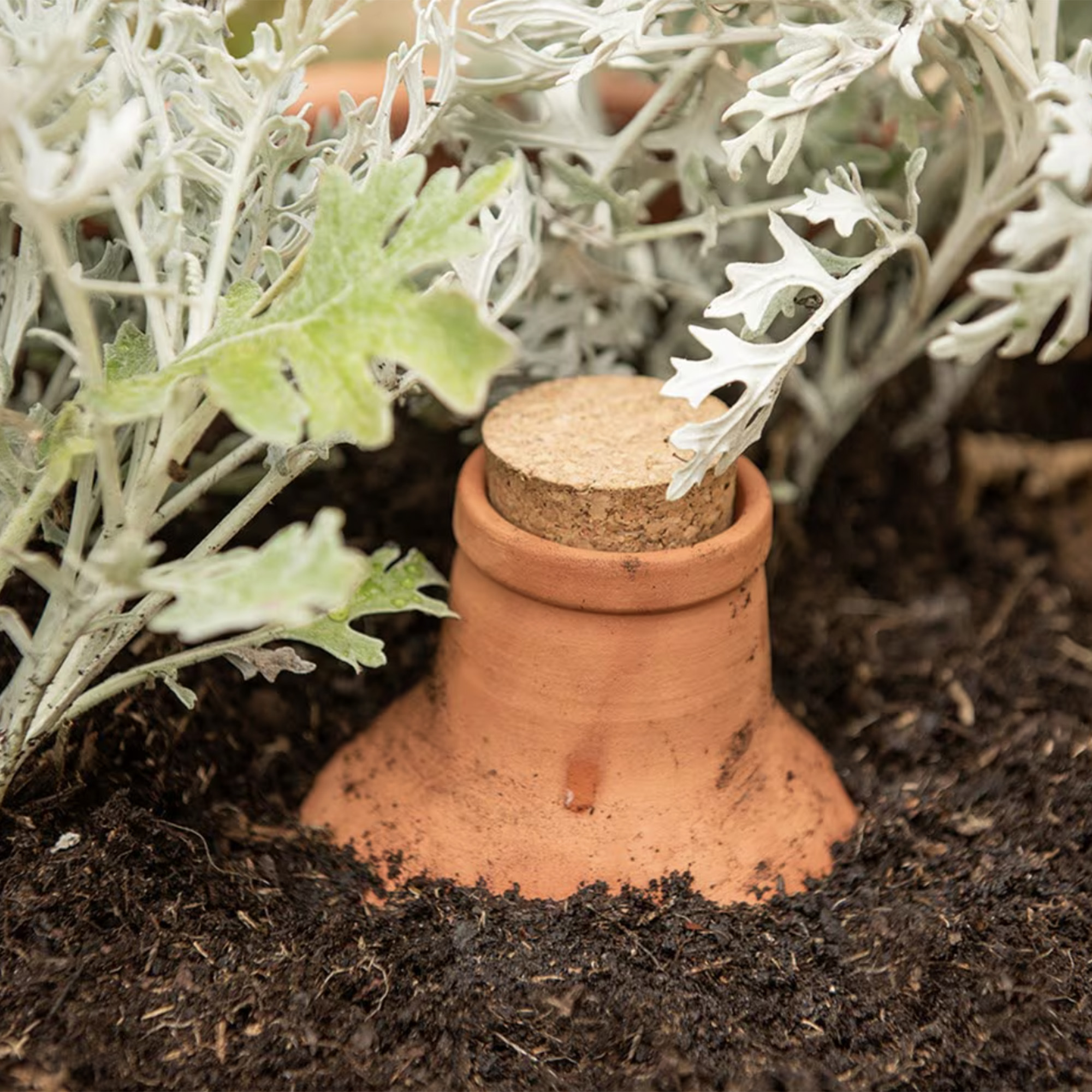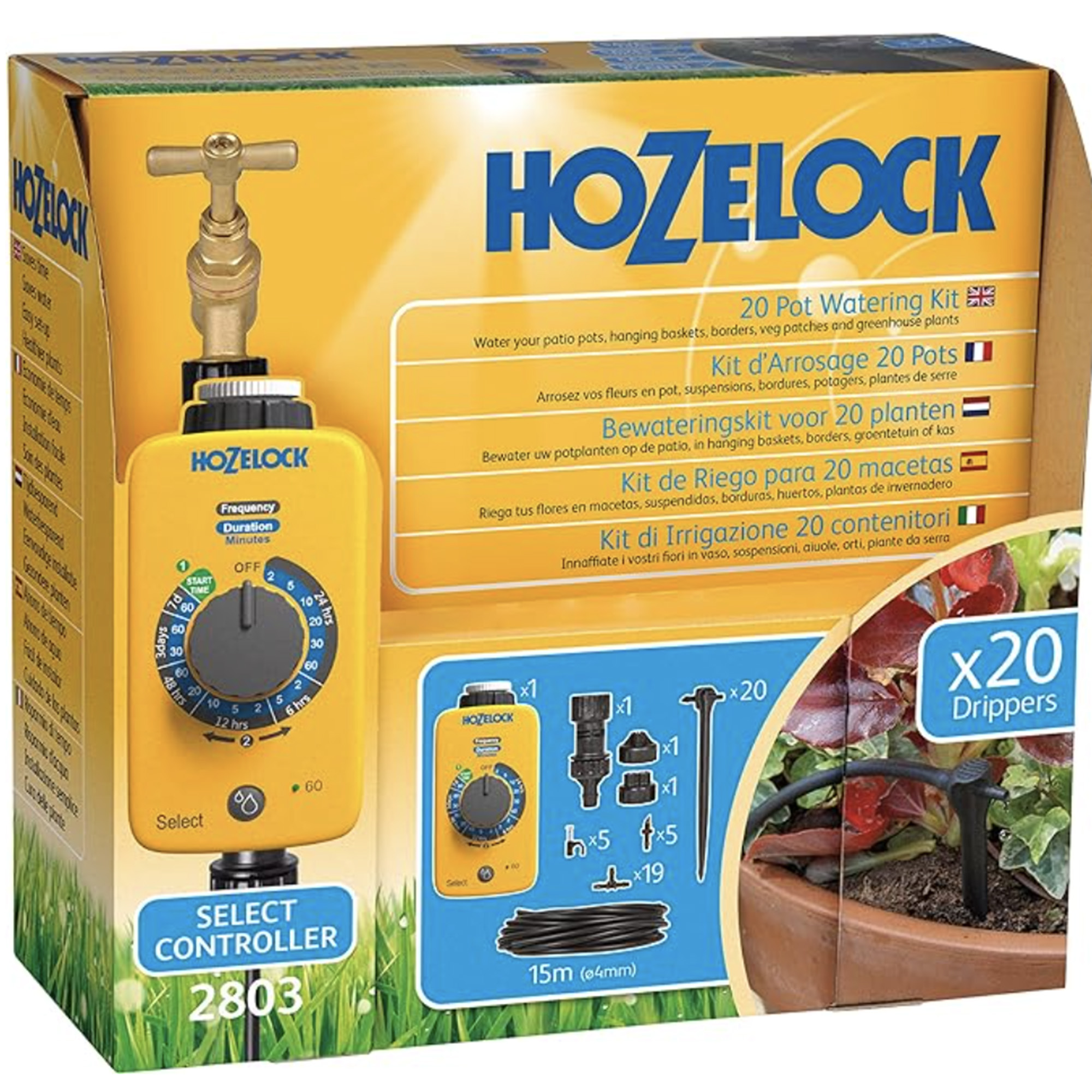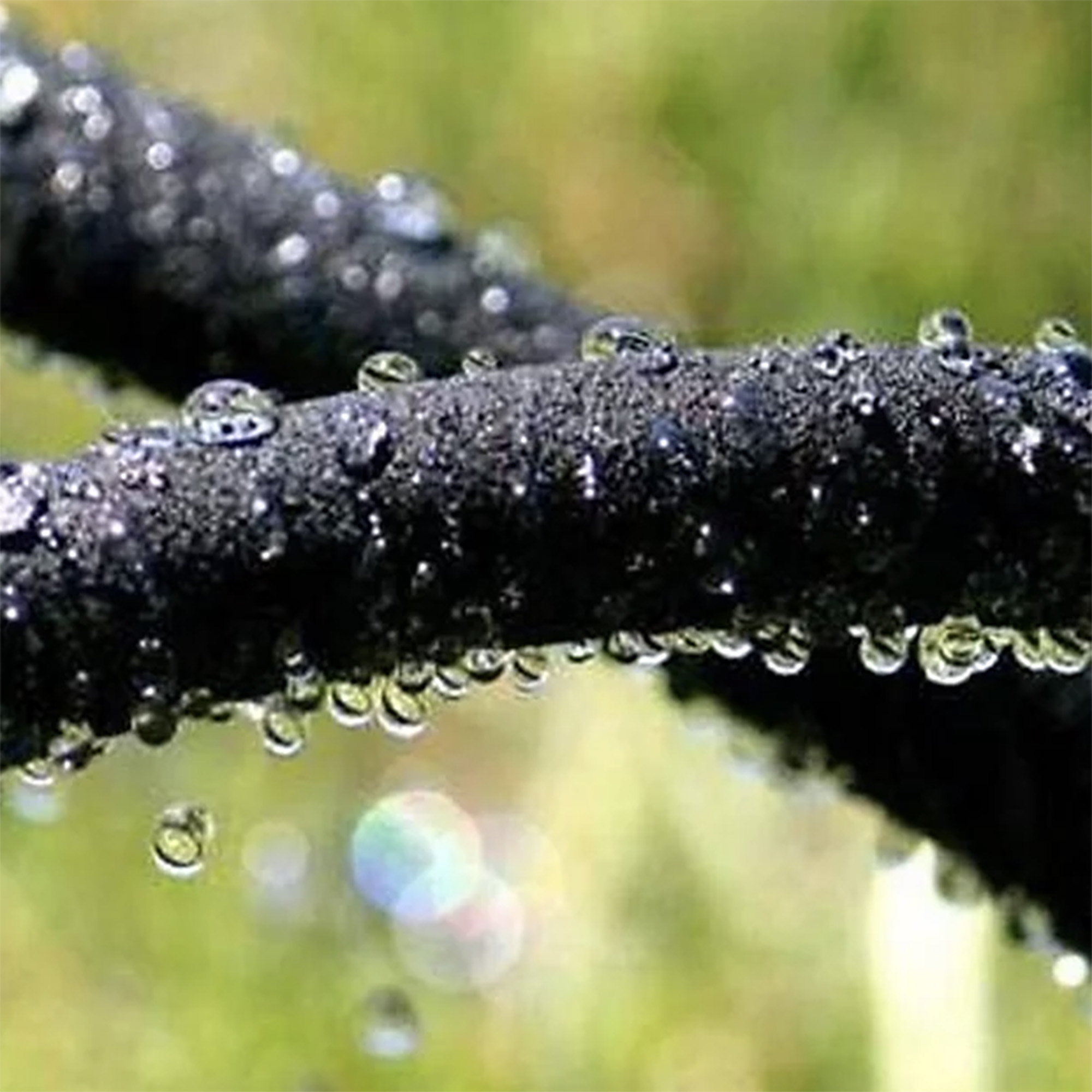Types of garden irrigation and whether adding a system to your garden is worth it
We explore the different types of garden irrigation and whether they're right for you
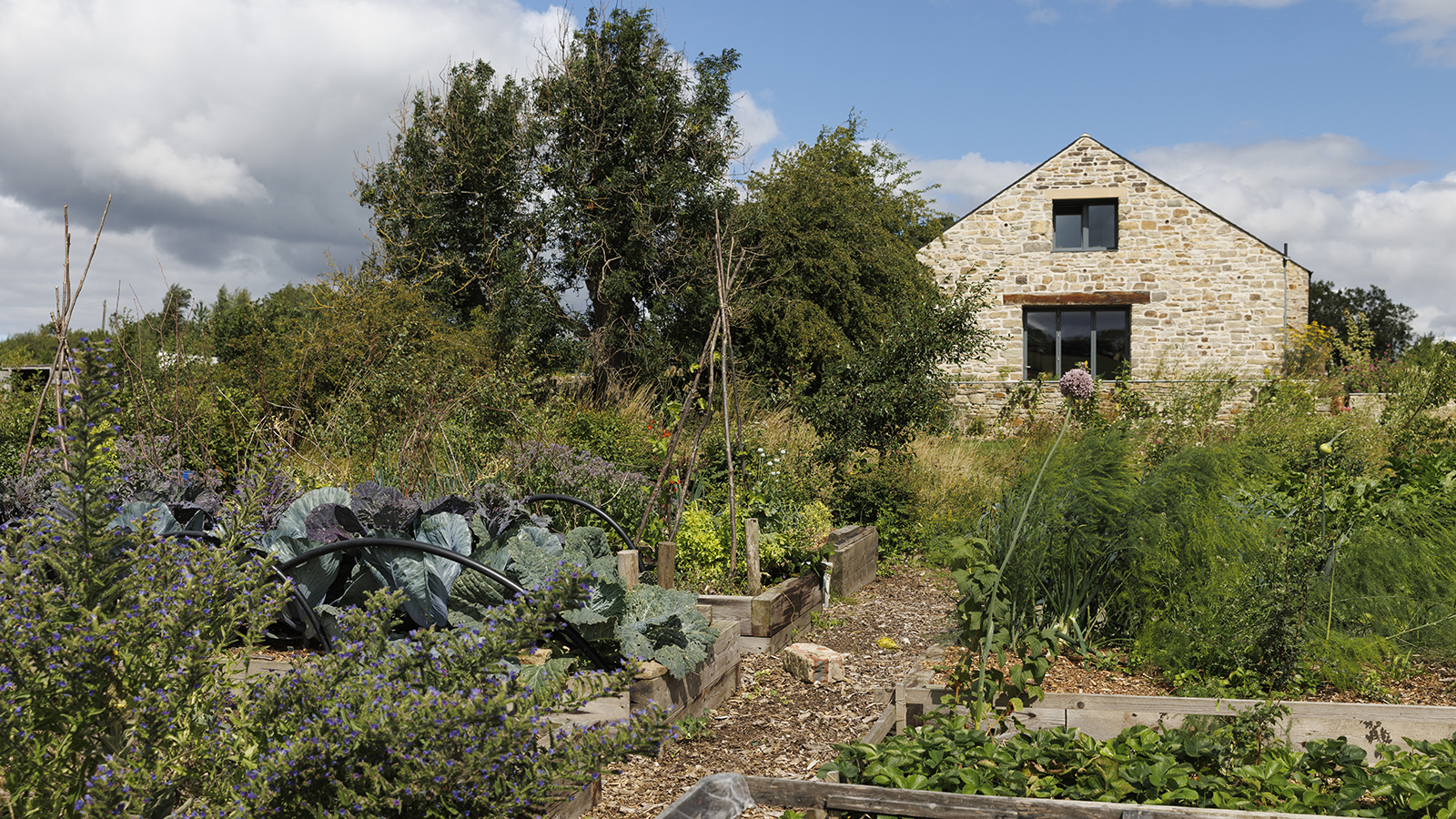
EDITOR'S NOTE: We are aware that this article includes a quote from a purported expert whose credentials we have not been able to verify. The quote is in a queue to be removed as soon as possible. We regret this lapse in our verification process and have updated our internal protocols to reduce the risk of recurrence.
Deciding whether garden irrigation is a good option for you mostly comes down to the size of your garden, the scale of your planting, and whether you can find a type of garden irrigation that fits your needs.
"Garden irrigation is a way to water your lawn and plants. This could be as simple as using a water butt and watering can, but when we talk about irrigation, we tend to mean an automatic or semi-automatic system such as a sprinkler or drip hose to deliver water to your garden landscaping," says garden expert at MyJobQuote Fiona Jenkins.
"A good garden irrigation system should be able to deliver just the right amount of water to plants and lawns, so the ground stays moist but not wet. Ideally, it should save you time and effort and help maintain the health of your garden," she says.
Different types of garden irrigation
"The three most common methods of garden irrigation are hand watering, garden sprinklers and an automatic garden irrigation system," says Tom Clifford, garden expert at Gardenstone.
"For small gardens hand watering is common as it can be done quickly and easily using a garden hose, however, for larger gardens you may wish to install an automatic system of pipes that will save you time and energy by regularly providing your plants with water," says Tom.
Fiona Jenkins outlines the different types of garden irrigation below:
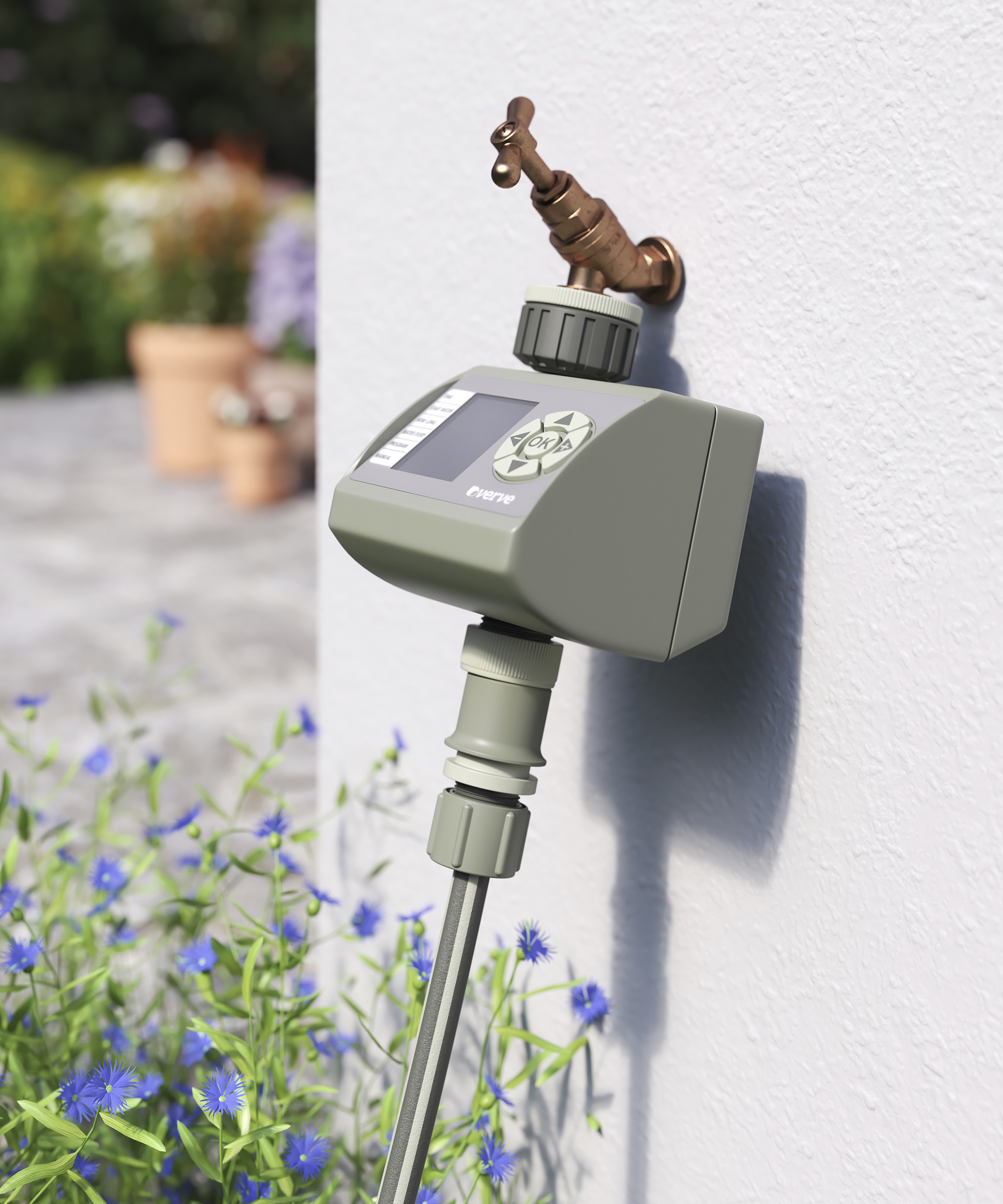
- Drip pipes and hoses: These release water slowly at specific points. A soaker hose works in a similar way, but instead of having specific watering points, the whole hose is porous, so water slowly leaks out along the length and into the ground.
- Spray and sprinkler systems: These will throw water out to hydrate a specific area of garden. Micro sprayers tend to project a finer shower of water than garden sprinklers, making them well-suited to young plants and delicate flowers. Sprinklers can be mounted on fixed rods or on pop-up mechanisms that can be buried in the ground. They can be connected to an outdoor tap or water butts.
- Rain channels: You can also design your garden with a system of channels and pools that irrigate your garden naturally.
- Low-tech irrigation systems: There are options which require little set up such as watering spikes and terracotta watering systems known as Olla. Try Terracotta Clay Garden Ollas / Oyas / Olla - plant watering system / water saver at eBay.
- Hand watering: This includes watering cans and hoses and where your watering is done by hand every time you need it.
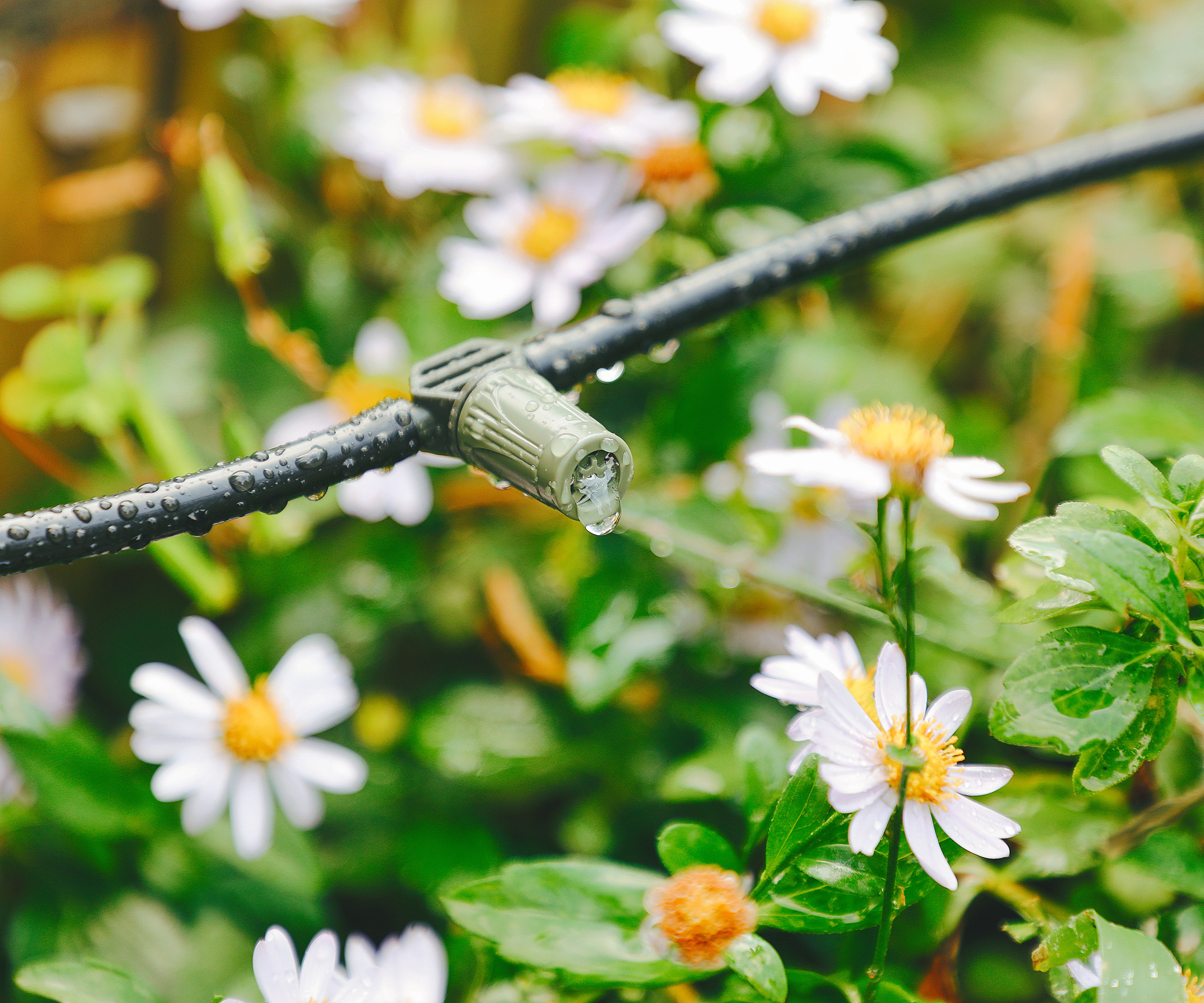
Shop garden irrigation
Benefits of garden irrigation systems
- Weed reduction: Richard Ferguson of Hozelhock suggests that an automatic irrigation system can help to kill weeds naturally. “As the water is directed to exactly where it needs to be. Weeds tend to appear when there is excess moisture and gaps between plant,” says Richard.
- Uses less water: Watering by hand or with a hose means that you're watering plants from above. Irrigation systems water the soil directly meaning that less water is evaporated or blocked by the leaves of your plants. "Every drop is targeted properly, so water and money are saved," says Jane Dobbs garden expert at Allan's Gardeners. Of course, if you're watering with rain runoff, this would be the most environmental method.
- Saves time and effort: "Some more advanced garden irrigation systems have timers, making them ideal for busy homeowners that may not have time to water their gardens regularly," says Tom Clifford.
- Customised watering: "If you have plants and edibles with differing needs, you might find a drip-hose kit more useful. You can usually adapt and add to these, to customise your set up and many come with adjustable drippers and flow controls, so you can make sure your plants are getting the right amount of water," says Tom.
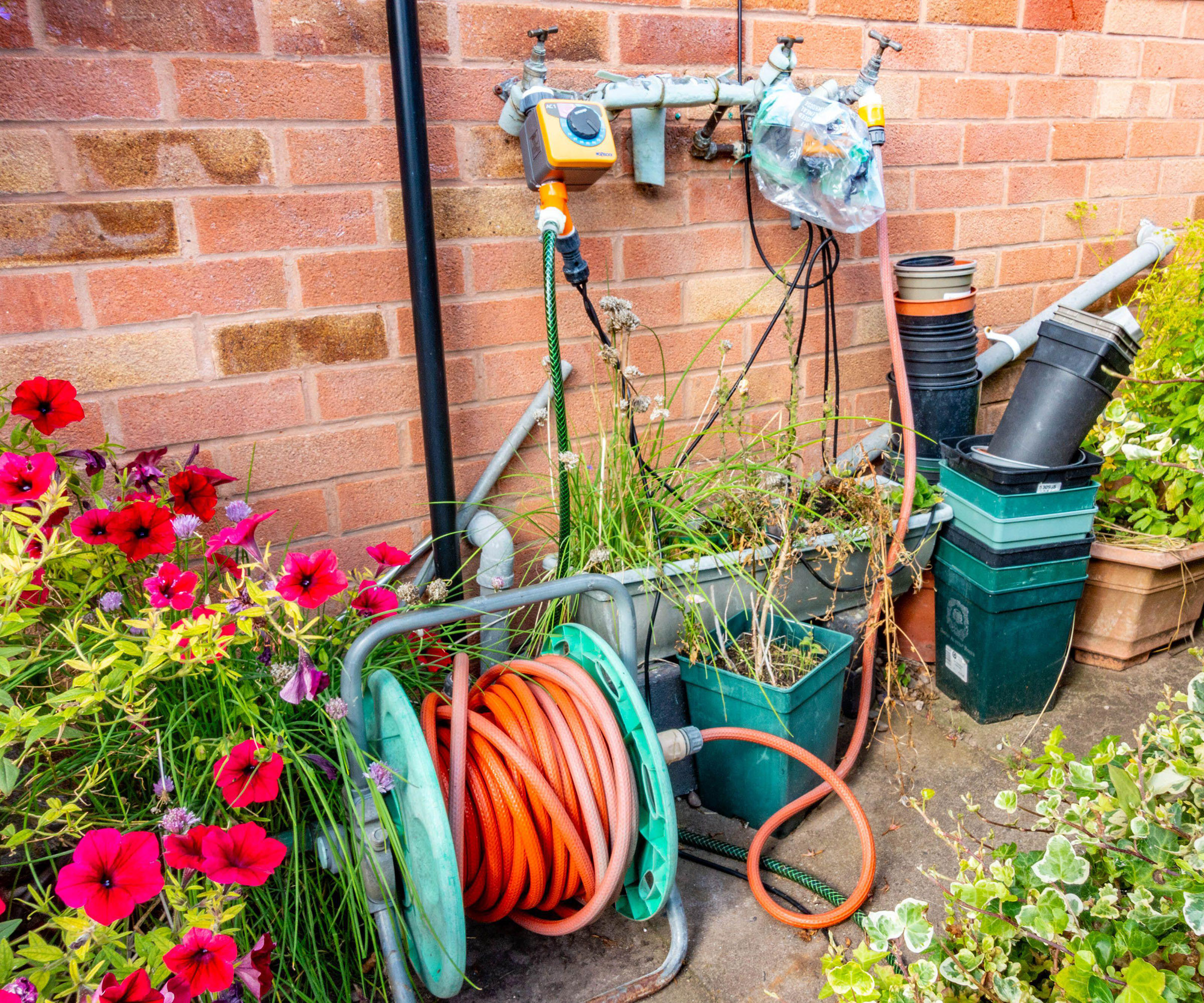

Tom Clifford is the director of Gardenstone Limited, a leading garden landscaping supplier. Tom has been in the garden landscaping business for over 13 years making him an expert in garden design and maintenance. He enjoys sharing his knowledge with readers to help them create the most sustainable and visually appealing gardens as possible.
Downsides to garden irrigation
- Installation effort: "For small gardens a mechanical irrigation system may be more trouble than it's worth and you may find that five minutes hand watering every day will be enough to sustain the growth of your plants and keep them healthy," says Tom Clifford.
- Visual impact: Though some irrigation systems are subtle, you may not like the appearance of all the extra tubes running through your garden.
- Trip hazards: Depending on where your water source, the hoses may present a trip hazard as they reach your plants.
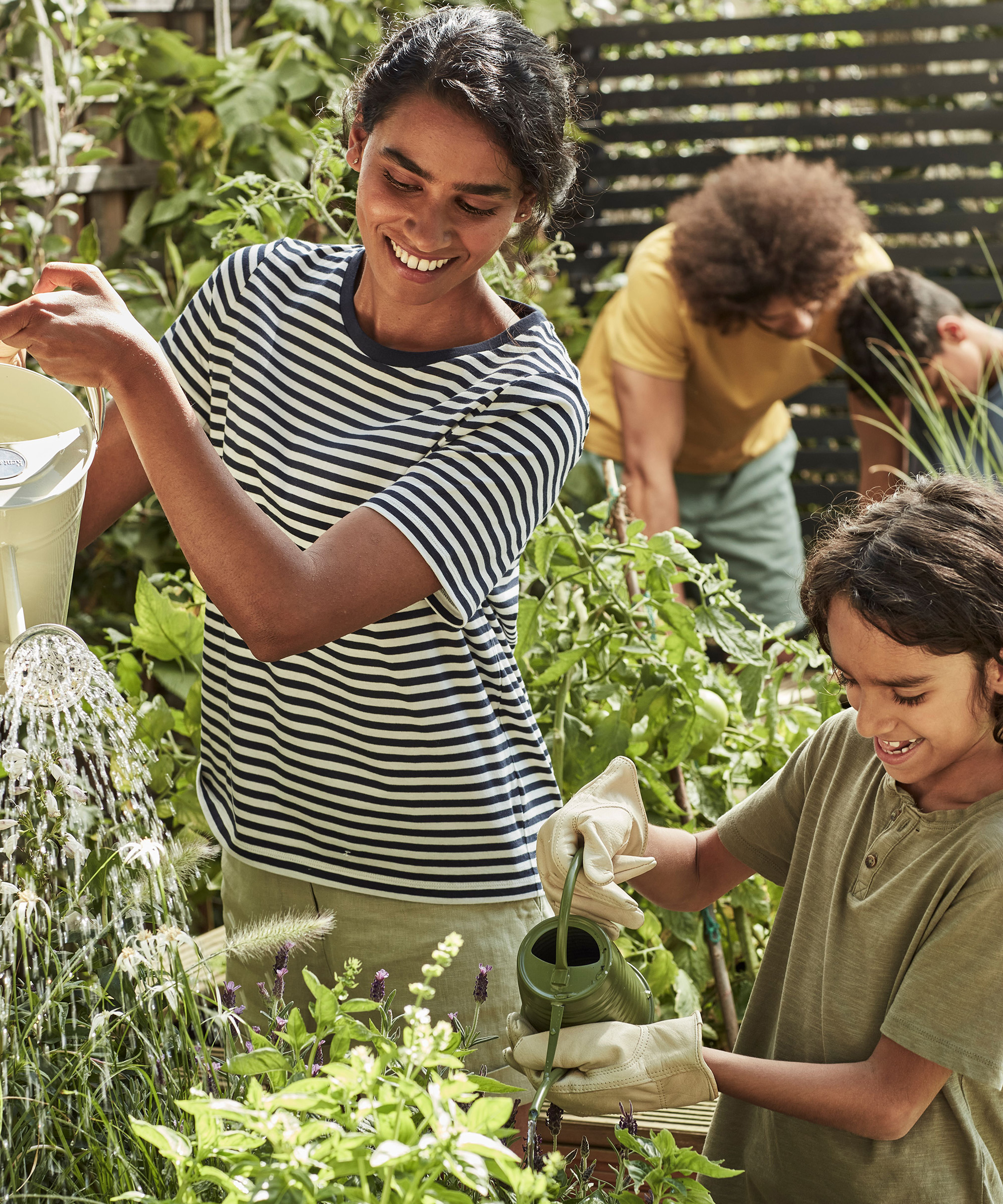
How to set up a drip irrigation system
"Drip irrigation systems are very easy to set up if you use an off-the-shelf kit. These come with a hose, connectors and drip heads as well as pegs to pin your system in place," says Fiona Jenkins.
Bring your dream home to life with expert advice, how to guides and design inspiration. Sign up for our newsletter and get two free tickets to a Homebuilding & Renovating Show near you.
"It might help to sketch out a plan of your garden design and mark out where you’d like your lines to run and where you think the drip heads should go. Measure out this pipeline route in your garden and count the number of drip points you need. This will help you decide on the right kit to buy. Ideally, choose one with plenty of add-ons available, so you can tweak the system in the future," she says.
Try the Gardena Micro-Drip-System Drip Irrigation Set Terrace (30 plants) at Amazon.
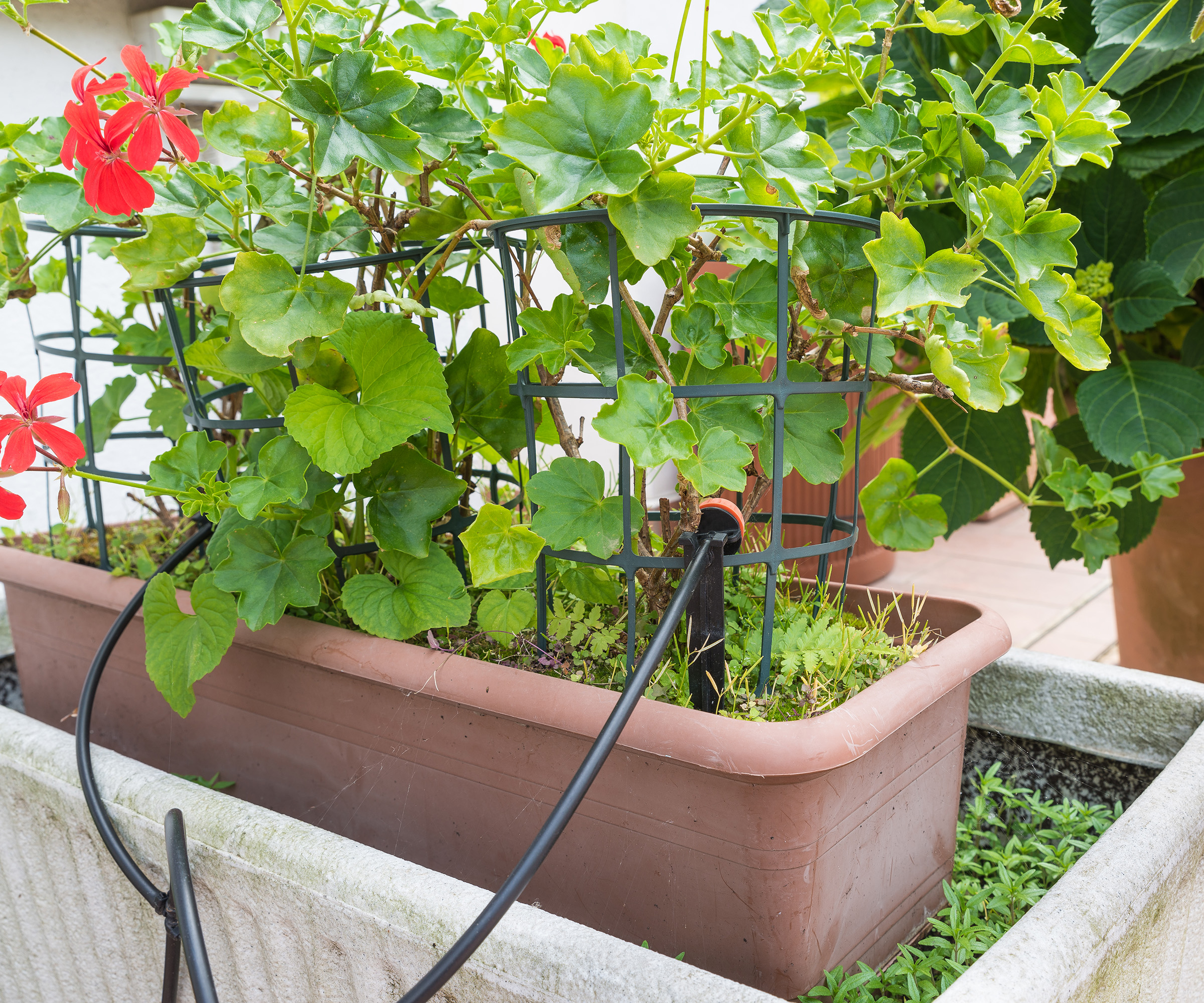
FAQs
What type of irrigation is best for a garden?
"The type of irrigation that’s best for your garden depends on the ground conditions, your local climate and what you’re growing. If your garden tends to suffer from boggy patches, you may benefit from using a system of channels and pools to redistribute the excess rain and groundwater to the rest of your garden. This saves on tap water and should help to stop plant roots from rotting in waterlogged soil," says garden expert at MyJobQuote Fiona Jenkins.
"If your garden is largely lawn and the soil is well-draining, then you may benefit from a sprinkler system. This should stop your lawn drying out in the summer and saves you time getting the hose out."
"For those with lots of flower beds and veg patches, you may find a drip or soaker hose is best. If your plants’ watering needs are all fairly similar, then a soaker hose system is a good option for providing an even distribution of water."
"However, if you have plants and edibles with differing needs, you might find a drip-hose kit more useful. You can usually adapt and add to these, to customise your setup and many come with adjustable drippers and flow controls, so you can make sure your plants are getting the right amount of water," says Fiona.
Is garden irrigation worth it?
"Although you can pay between £30 and £150 for an irrigation kit, you will save yourself a lot of time in the long run – especially over the summer months. So they are worth it for busy households with large gardens," says Fiona Jenkins of MyJobQuote.
"It’s also thought that using an irrigation system can reduce your garden’s water consumption by as much as 70%. To implement the system though, you will need an outside tap. If you don’t have one, installation can cost between £80 and £150. So, do factor this into your set-up and running costs," says Fiona.
If you would like to reduce the need for watering in your outdoor space it's worth looking at our gravel garden ideas which rely on little to no water to thrive.

Teresa was part of a team that launched Easy Gardens in 2018 and worked as the Editor on this magazine. She has extensive experience writing and editing content on gardens and landscaping on brands such as Homes & Gardens, Country Homes & Interiors and Living Etc magazine. She has developed close working relationships with top landscape architects and leading industry experts, and has been exposed to an array of rich content and expertise.
In 2020 Teresa bought her first home. She and her partner worked alongside architects and builders to transform the downstairs area of her two bedroom Victorian house in north London into a usable space for her family. Along the way she learned the stresses, woes and joys of home renovation, and is now looking to her next project, landscaping the back garden.
